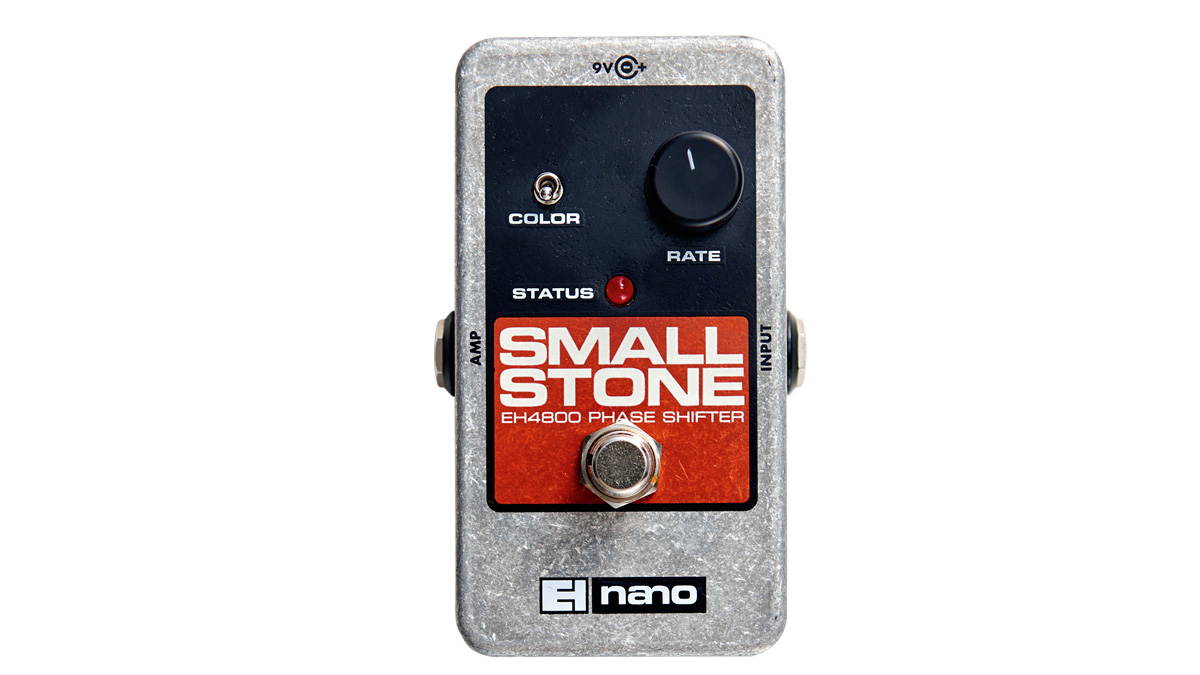MusicRadar Verdict
Phasing writ large for those who like an obvious effect.
Pros
- +
A vast array of sounds.
Cons
- -
Very few.
MusicRadar's got your back
This 'board-friendly 'Nano' version of the Small Stone has the same controls as the original: a Rate knob and a Color switch that changes the character of the phasing.
In its lower position, Color gives you milder phasing similar to the Phase 90, though not quite as warm sounding and with a faster max phase speed that can approximate a fast Leslie and even goes as far as a metallic ring mod tone.
Flick Color up for a deeper, stronger phasing with a more pronounced sweep that manifests itself as a vowelly 'wow' once the rate knob gets to 12 o'clock and beyond. At full rate, it's a classic 'underwater' sound.
Next to our 70s vintage Small Stone, the Nano can duplicate some of the sounds but gets much brighter in one segment of the sweep, so the dark-to-bright nature of its sweep sounds more intense and is especially notable at slower rate settings.
Want all the hottest music and gear news, reviews, deals, features and more, direct to your inbox? Sign up here.
Trevor Curwen has played guitar for several decades – he's also mimed it on the UK's Top of the Pops. Much of his working life, though, has been spent behind the mixing desk, during which time he has built up a solid collection of the guitars, amps and pedals needed to cover just about any studio session. He writes pedal reviews for Guitarist and has contributed to Total Guitar, MusicRadar and Future Music among others.

